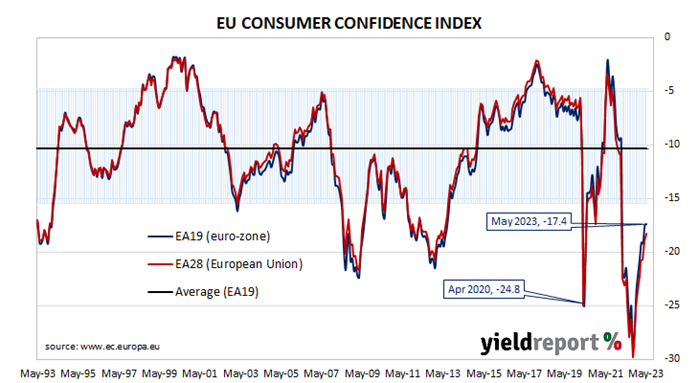Summary: Euro-zone household pessimism essentially unchanged in May; consumer confidence index still well below long-term average, lower bound of “normal” readings; confidence has improved steadily since October; euro-zone yields barely move.
EU consumer confidence plunged during the GFC and again in 2011/12 during the European debt crisis. After bouncing back through 2013 and 2014, it fell back significantly in late 2018 but only to a level which corresponds to significant optimism among households. Following the plunge which took place in April 2020, a recovery began a month later, with household confidence returning to above-average levels from March 2021. However, readings subsequent to early 2022 have been extremely low by historical standards.
Consumer confidence remained essentially unchanged in May according to the latest survey conducted by the European Commission. Its Consumer Confidence Indicator recorded a reading of -17.4, below the generally expected figure of -16.9 but ever-so-slightly above April’s -17.5. This latest reading is still well below the long-term average of -10.4 as well as the lower end of the range in which “normal” readings usually occur.
“Consumer confidence has improved steadily since October and is at its highest level since February 2022, although stubbornly high inflation may stall the recovery,” said ANZ senior economist Felicity Emmett.
Sovereign bond yields barely moved in major euro-zone bond markets on the day. By the close of business, the German 10-year bund yield had returned its starting point at 2.46% while the French 10-year OAT yield finished 1bp higher at 3.03%.


